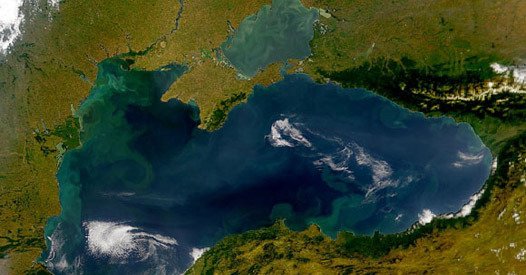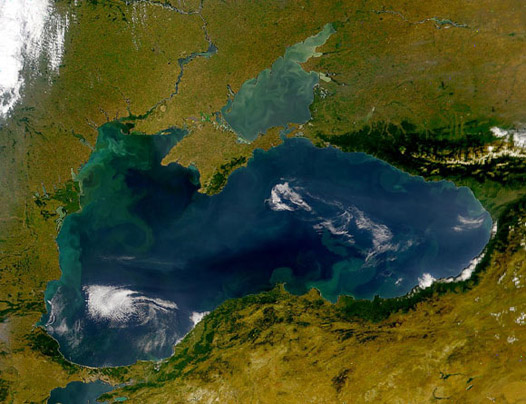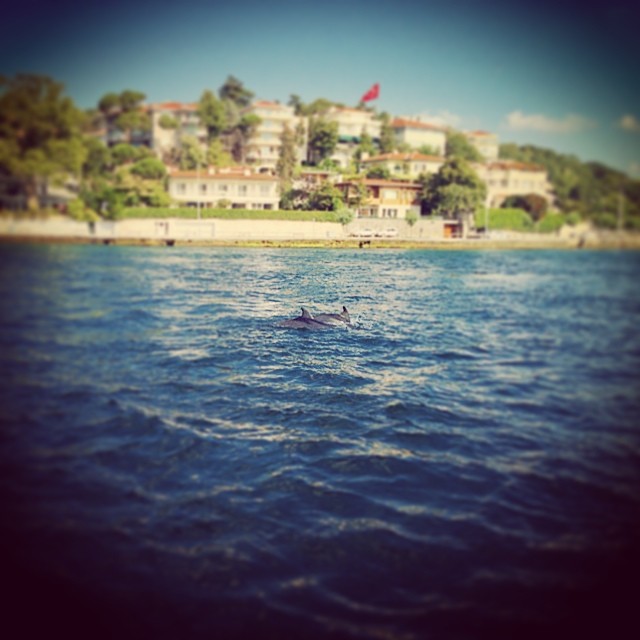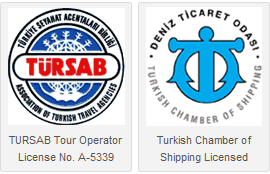
The Plight Of The Black Sea Against Pollution
Water pollution is threatening the marine equilibrium of the Black Sea, so much so that the very existence of marine life itself is under threat for survival.
In this article, we’ll examine the effects of pollution in the Black Sea including examples relating to the Turkish Black Sea Coast near Istanbul, seeing how delicate marine ecosystems and co-dependent food chains are disrupted, followed by a look at how they may be protected through change and conservation.
Index of Content on this Page:
- Endangered on Turkey’s Black Sea Coast – Did You Know?
- Causes of Water Pollution in the Black Sea
- Effects on Marine Life in the Black Sea:
- Change Through Environmental Protection
- Conclusion, Sources & Further Reading
Endangered on Turkey’s Black Sea Coast – Did You Know?
- That the Black Sea increasingly contains some of the largest marine “dead zones” (areas of no life) in the world?
- That many wild-caught fish like ‘Anchovies’ (Hamsi), familiar household names on food plates in Istanbul, are already on official “Endangered” lists?
- That the dolphins sighted in the Black Sea and Turkish Straits are found nowhere else in the world but are on the world’s “Endangered Species”?
Read on to learn more about these issues. Aside to overfishing and geographical factors, water pollution is a major source of all three of these marine threats in the Black Sea region so lets examine the causes of this first.
Causes of Water Pollution in the Black Sea:

The Black Sea – Note the Danube delta at the North and the Turkish Coast & Straits along the South. Photo by Nasa.
The Black Sea is like a basin, collecting water from contributing rivers and estuaries from all its bordering countries, such as the Danube from its European neighbors, or the Yeşirmak River from North Turkey’s Black Sea Coast. So all the way along their route, these rivers pick up and carry many heavy metals, chemicals, sewage, toxins and other waste that run into them.
These toxins originate from land seepage and rain run-offs, deliberate dumping of waste and improperly managed or maintained infrastructure from various industries, farms, urban and construction areas, marine vessels and overhead aircraft.
Two everyday examples that were later found to have a huge effect were artificial fertilizers that were nitrate enriched for farming and phosphorus enriched detergents used in household across cities since the sixties and seventies.
As the rivers finally exit into sea, their waters loaded with pollution are eventually released there. And as they enter the Black Sea, the pollution levels are further compounded by its landlocked nature, where they wreak havoc on delicate marine ecosystems and cause environmental destruction.
Effects on Marine Life in the Black Sea:
(1) Plantlife – Spawning “Dead Zones”
Unfortunately these “pollution-enriched” waters, particularly from phosphorus and nitrates, cause over-blooming of plantlife, algae and plankton. Due to overcrowding and less air to share, a process scientifically known as “eutrophication” takes place, resulting in the water becoming de-oxygenated, acidified and stagnated, and changing in temperature and salinity.
Altogether these changes damage and disrupt sensitive marine ecosystems, to the point of creating marine “dead zones”, an area where marine life can no longer thrive or survive, effectively destroying habitats and killing entire species along entire food chains.
(2) Fish – Declining in Diversity & Number
Further along the food chain, the effects of the Black Sea’s marine pollution, loss of habitats, feeding and breeding grounds through marine dead zones have led to depletion in fish numbers, a loss in their diversity and an increase in their toxin-levels from pollutants such as heavy metals such as lead, chromium, mercury.
Sturgeon, a fish highly sought-after for its roe for caviar, are one of the most endangered species. Aside to overfishing, a major reason of their decline down to pollution and de-oxygenation of the shallow coastal waters they inhabit and where lay their eggs.
To see just how this is effecting fish off Turkey’s Black Sea Coast, please see the below annotation from the Black Sea Commission’s “Black Sea Fish Check List” – A Publication of the Commission on the Protection of the Black Sea Against Pollution – a surprising number of familiar fish found on our dining tables are already critically endangered or soon to be:
| Critically Endangered | Extremely high risk of extinction in the wild: | Includes Giant Sea Bass and 10 species for Turkey including Sturgeon, Beluga and Northern Bluefin Tuna. |
| Endangered | High risk of extinction in the wild. | Includes Black Sea Salmon (Alabalık), Turbot (Kalkan), Common Sole (Dil Balığı) |
| Vulnerable | High risk of endangerment in the wild. | Includes 36 species for Turkey including Round Sardinella (Sardines), Anchovies (Hamsi), Whiting (Mezgit), Angler (Fener Balığı), European Seabass (a kind of Levrek), Grey and Tub Gurnard (Kirlangiç) |
| Near Threatened | Likely to become endangered in the near future. | Includes Pisibalığı, Red Mullet (Barbun), Striped Sea Bream (Karagöz), East Atlantic Red Gurnard (a kind of Kirlangic), John Dory (Dülger) |
(3) Mammals – Dolphins an Endangered Species
Unique ‘Black Sea’ dolphins and porpoises need protection

Endemic Black Sea Dolphins on Istanbul’s Bosphorus. Photo from Atdaa: https://instagram.com/p/qa-L9Gwp_M/
Higher up the food chain, marine mammals in turn suffer from a loss of food abundance and habitats due to pollution’s effect on depleting fish stocks, plant life and ecosystems below them. Sadly these factors are endangering a unique type of dolphins found only in the Black Sea, Istanbul and the Turkish Straits.
According to the Turkish Marine Research Foundation and a research document by the IUCN (International Union for Conservation of Nature), the Black Sea and Istanbul’s Bosphorus Strait sees up to up to 3 different species of cetaceans as permanent residents, the bottlenose dolphin, common dolphin and harbor porpoise, which also happen to be 3 unique subspecies, completely unique to this region and found nowhere else in the world.
Unfortunately their numbers have decreased so much so that they have become classified as Vulnerable or Endangered according to the IUCN “Red List” of endangered species. For example, the Black Sea Bottlenose Dolphin and Black Sea Harbor Porpoise are both on the Endangered List of the IUCN, with populations estimated to be under 1,000 and 10,000 mammals:
| Endangered | High risk of extinction in the wild. | Black Sea Bottlenose Dolphin, Black Sea Harbor Porpoise |
| Vulnerable | High risk of endangerment in the wild. | Black Sea Common Dolphin |
Change Through Environmental Protection
Since the nineties, a united effort by many organizations, environmentalists and researchers across the region, has resulting in a gradual recovery in the scale of marine dead zones, some fish stocks have replenished and more is being done to protect and conserve marine habitats for the survival of their inhabitants.
According to the Global Partnership For Oceans, some of these positive changes resulted from increasing education, awareness and training about the issues: Farmers were trained in Eco-friendly cost-effective methods – recycling manure, reducing fertilizer usage and animal waste runoff. The general public were educated about avoiding phosphorus laden detergents through awareness campaigns. These helped to reduce much of the nitrate-phosphorus pollution, thereby reducing eutrophication and even reversing some of the former marine dead zones.
Other major changes resulted from investment, development and proper maintenance and refurbishment of waste water facilities, such as projects implemented by an international task force called DABLAS:
DABLAS:
An Environmental Steward for the Black Sea
The DABLAS Task Force (for Black Sea & Danube) was set up to improve the protection of water and its ecosystems of the Black Sea region and its neighboring countries, through research and investment, pilot projects and cost-effective planning, united with governments and other major organizations such as the Black Sea Commission and ICPDR (International Commission for the Protection of the Danube River).
On Turkey’s Black Sea Coast, one such project by DABLAS was prioritized and implemented between Amasya and Tokat, called the DABLAS Phare Facility Project. Here it implemented an integrated, cost-effective and Eco-compliant Water Resource Management Plan for the basin of the Yeşilirmak River, the second longest river in Turkey at 519km, thereby reducing the level of pollution of the Black Sea from this region of the Turkish coast. The results of the project was a success and it was used as a model for similar projects in neighboring countries.
Tourism Industry:
An Environmental Steward for the Coast
Outside of official agencies and government, other industries such as tourism are also responsible for protecting our waters from pollution, particularly along the coast where tourism resorts flourish and activities like dolphin-watching, sailing and swimming abound.
In the past people thought the sea could absorb and degrade everything, but research has shown that this is not the case. To prevent environmental destruction from pollution, we need to employ more sustainable tourism which can be implemented to find a balance between limits and usage.
Education, training and awareness of staff is the first crucial step for encouraging and fostering environmental responsibility. This helps makes better choices such as selecting Eco-friendly products and methods, sourcing fish supplies responsibly from sustainable fish farms and following proper regulations for garbage and waste disposal. This will help to keep our coasts and beaches cleaner for both visitors and wildlife.
Tourism campaigns can provide a face and branding for our wildlife, such as our endangered dolphins unique to the Black Sea. In fact if we view our marine life an important brand, this would pave a powerful way of marketing the marine environment with conservation as key. In turn this would be a driver for government and investors to research and designate ‘Marine Protected Areas’. For branded areas such as these, the tourism industry and local communities would have further incentive to support, donate and conserve them with pride.
As for dolphin-watching or tourism vessels doing Black Sea tours, cruises and day trips, we can train staff to cut engines early to avoid distressing noise pollution to the animals and to maintain a no-go safety zone to avoid disruption of their natural hunting and feeding patterns. Operators can further choose to take a Tour Operator Animal-friendly Pledge, such as this one by the Right Tourism to promote ethical, responsible animal friendly tourism.
Conclusion
The Black Sea remains fragile with vulnerable marine life and endangered species of fish and dolphins. Extinct species may be irreversible but vulnerable ones can yet be replenished if we take action to reduce pollution and conserve known habitats. It is only through building awareness, training, monitoring and long-term planning across industries, neighboring countries, government and the general public, that the effects of human-induced environmental impacts can be managed, reduced and perhaps even reversed for the generations to follow.
Sources:
Black Sea Commission – https://www.blacksea-commission.org/_publ-BSFishList.asp
https://cmsdata.iucn.org/downloads/iucn_med_2012_marine_mammals___sea_turtles_def.pdf
https://www.imo.org/OurWork/Environment/PollutionPrevention/Garbage/Pages/Default.aspx
Suggested Further Reading & Information:
BlackSeaWet Initiative: Publication on Conservation of Wetlands on the Black Sea
TURSAB Magazine – a monthly publication by Turkey’s tourism authority
https://darwin.bio.uci.edu/~sustain/issueguides/Black_Sea/Text.htm
https://www.wastegovernance.org/Documents/WP_14_DABLAS_Review.pdf
https://right-tourism.com



Leave a Comment